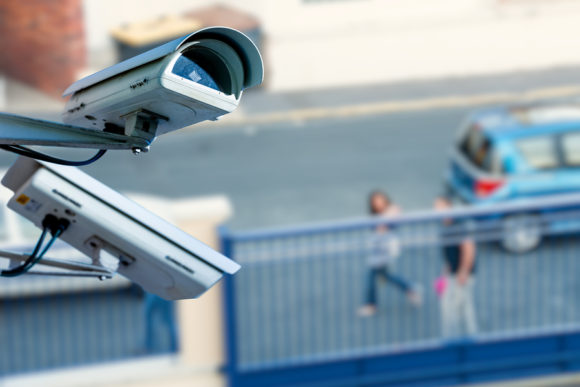The physician couldn’t tell what was causing the smudge on a CT scan of his wife’s lungs, so he referred her to a pulmonologist. That would likely have meant a two-week delay.
Instead of waiting, Jorey Chernett, chief executive officer of Authentic4D, took his wife to a “sub-specialty” radiologist the next day. During a presentation at the Combined Claims Conference on Tuesday, Chernett showed the result on screen: A three-dimensional image that clearly showed a pear-shaped mass in his wife’s lung.
Turns out, the mass was a non-malignant abscess. But the speed at which the radiologist was able to produce a usable image allowed a speedy biopsy that finally put an end to his wife’s nagging cough.
Chernett, his chief medical officer at Authentic4D and a claims manager for GEICO, pitched the use of 3-D imaging instead of hiring independent medical examiners to hasten the resolution of injury claims. Specifically, Chernett said using highly specialized radiologists who have an extra year or two of training in specific fields, such as the musculoskeletal system or neurology, will allow claims adjusters to more quickly and accurately identify claims that are legitimate and should be settled and claims that should be defended.
Chernett said 3-D imaging is especially useful for identifying claimants who are exaggerating injuries. He said 70 percent of people are visual learners. Three-dimensional images allow people, perhaps jurors, to see disorders that otherwise would likely only be described in an IME’s narrative report.
Typically, an Authentic4D radiologist will couple a video of 3-D image with a narrative and an affidavit that can be introduced as medical evidence for a cost of about $1,500, he said. For an extra charge, that report can include a voiceover by the radiologist.
“Three-D images reinforce the strength of your position,” Chernett said. “This is the signal that you want to show the other side, that you are prepared to take the case the distance.”
Dr. James A. Shirley, Authentic4D’s chief medical officer, said a New York study that included 153 patients who had received imaging showed that radiologists disagreed on what those images showed in 40 percent of cases. Shirley said often radiologists can be influenced simply by suggesting a certain injury exists, which is why Authentic4D insists on keeping its radiologists “blind” to whatever disorder is being asserted by claimants.
“It’s very important that the doctor is unaware of the details of the case,” he said.
Candid Cameras
The importance of images to claims professionals isn’t limited to injury claims. Later at the same conference, a security expert, an attorney and a city manager extolled the virtues of video surveillance as a means of managing risk.
Seymour Everett, a partner with the Everett Dorey law firm in Irvine, California, said attorneys should ask if a video is available in every case. He said he encourages his clients to invest in robust surveillance systems.
“What we tell our clients is you have to implement a public surveillance system because everybody else is doing it,” he said. He explained that most people have the capability to take videos on their cell phones. More and more law enforcement agencies are equipping officers with body cameras. Some cities even mount cameras in heavily trafficked public areas.
In fact, Chicago has an aggressive public surveillance system, Everrett said. Actor Jussie Smollet was arrested and accused of setting up a hoax attack on himself after Chicago police reviewed video taken from nearby surveillance cameras.
Everett said there are a couple of legal issues to keep in mind when deciding whether to install public surveillance. Cameras should not be used in areas where people have an expectation of privacy, such as within homes. Also, one should consider whether video surveillance would create a chilling effect on speech or conduct, he said.
For claims handlers, finding out whether video exists is the important question.
Often, videos can show up in unexpected places. For example, a plaintiff may remove any videos from social media that don’t help his position, said Joe Dalu, president of Premier Group International and a former police officer. But similar footage might be found if by checking the social media accounts of the plaintiff’s friends and family.
Jim Vanderpool, city manager for Buena Park, California, said his municipality has installed video cameras in the entertainment district and also equips its police officers with body cameras. He said the cameras on the streets make the public feel safer and the officers’ body cams have reduced personnel complaints.
“When we get these complaints, we tell them we are happy to sit down with them and review the video with them,” he said.
The Combined Claims Conference concludes today.
Was this article valuable?
Here are more articles you may enjoy.


 What The Return of California’s ‘Death Discount’ Means for Litigation
What The Return of California’s ‘Death Discount’ Means for Litigation  JPMorgan Wins Gender Pay Gap Dispute Against London Analyst
JPMorgan Wins Gender Pay Gap Dispute Against London Analyst  Surging Oil Tanker Insurance Points to Growing Black Sea Chaos
Surging Oil Tanker Insurance Points to Growing Black Sea Chaos  US Lawmaker Unveils Bill Requiring Manual Car-Door Releases
US Lawmaker Unveils Bill Requiring Manual Car-Door Releases 